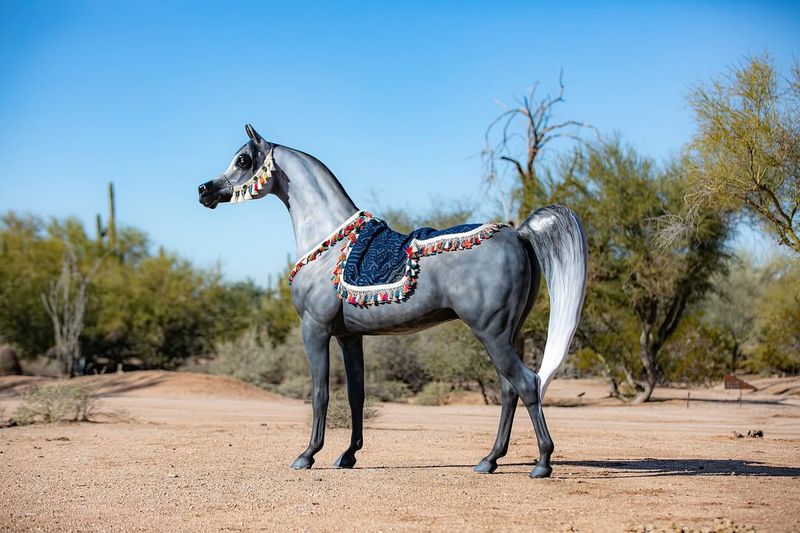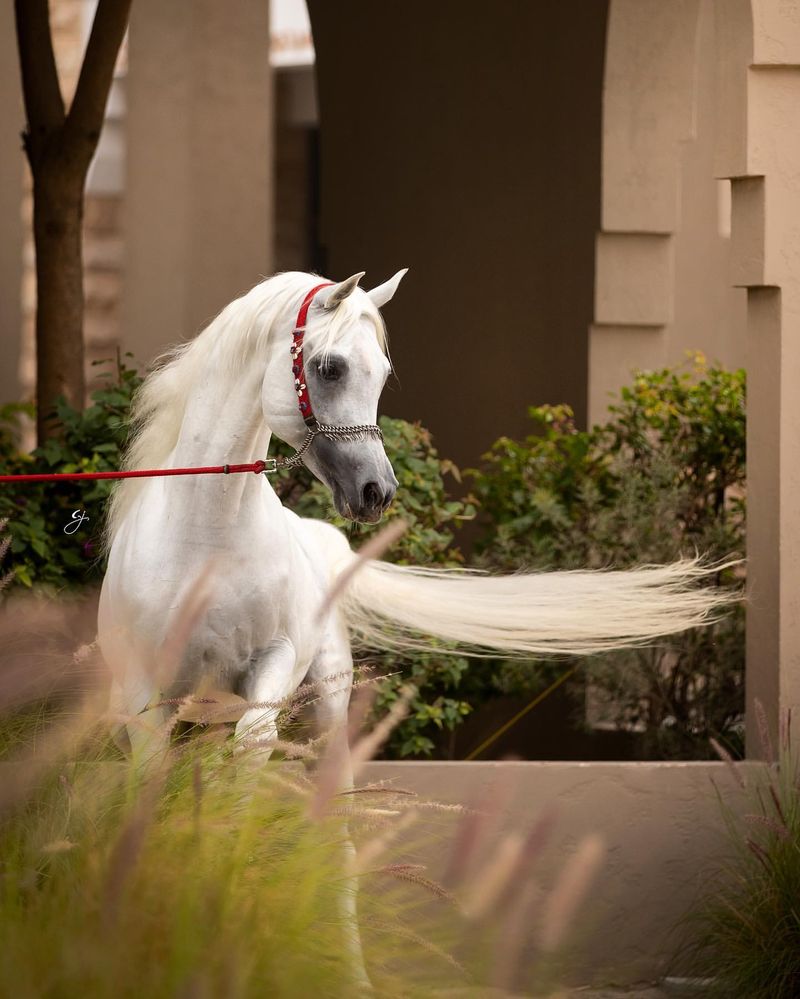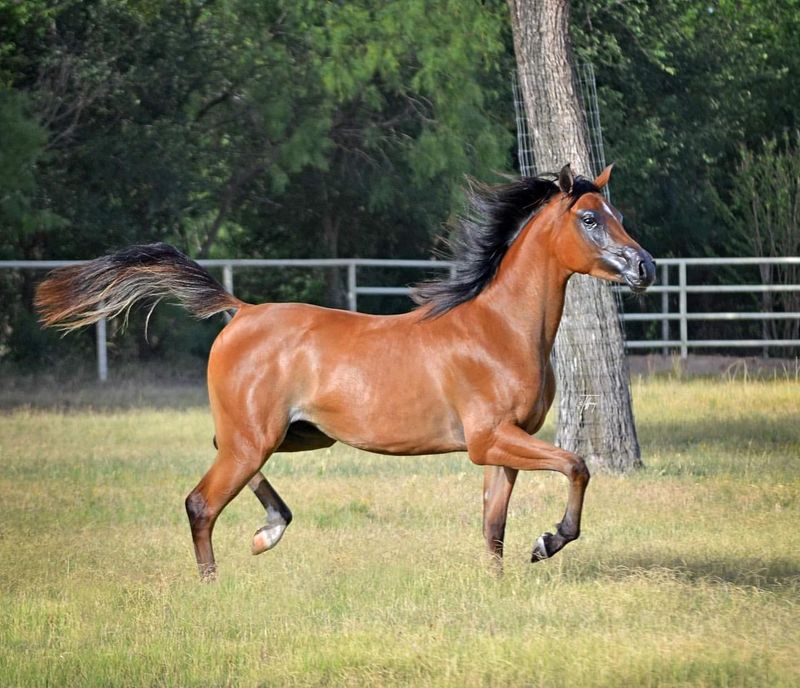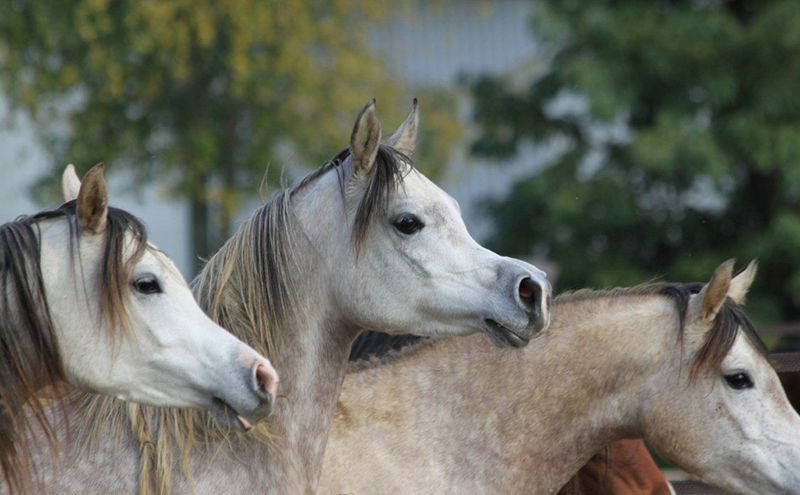📖 Table of Content:
Arabian and Thoroughbred horses are two of the most renowned breeds in the equine world, each with distinct characteristics that set them apart.
Understanding these differences is crucial for horse enthusiasts, riders, and breeders. This blog post delves into the unique features of these two breeds, highlighting their physical traits, temperament, and suitability for various equestrian activities.
Whether you’re an experienced equestrian or a curious beginner, this comparison will provide valuable insights into what makes each breed special.
1. Physical Appearance
Arabian horses are easily recognizable by their distinctive head shape, featuring a concave or dished profile, small muzzle, and large, expressive eyes. This unique face adds an aura of elegance and refinement.
Arabians often have a high tail carriage and a compact, muscular body. In contrast, Thoroughbred horses boast a sleek and athletic build, with a straight profile. Known for their longer legs and deep chest, they embody the essence of speed and agility.
Their physical structure is built for racing, showcasing strength and endurance. While both breeds are beautiful, their physical differences are a testament to their unique histories and breeding purposes.
Arabians are often seen in endurance riding, while Thoroughbreds dominate the racetrack. Understanding these physical distinctions aids in appreciating the diversity within the equine world.
2. Temperament
Temperament plays a crucial role in differentiating these two breeds. Arabians are known for their intelligence, sensitivity, and spirited nature. They often form strong bonds with their handlers and are remarkably responsive, making them ideal for those who appreciate a horse with personality.
On the other hand, Thoroughbreds are characterized by their energetic and sometimes fiery disposition. Bred for speed and competition, they can be more high-strung and require experienced handling.
This spirited nature is well-suited for racing and high-performance sports where quick reactions are essential. Both breeds require understanding and patience, but their temperamental differences highlight the importance of matching horse and owner based on experience and activity preference.
For those seeking an engaging bond, an Arabian may be the perfect choice, while thrill-seekers might lean towards the Thoroughbred.
3. Historical Background
The history of Arabian and Thoroughbred horses is as rich and varied as the breeds themselves. Arabians are one of the oldest horse breeds, with origins dating back thousands of years to the Arabian Peninsula. Their endurance and resilience made them prized possessions among Bedouins.
Thoroughbreds, meanwhile, have a relatively recent history, emerging in the 17th and 18th centuries in England. They were developed primarily for racing by crossing native mares with imported Arabian, Barb, and Turkoman stallions.
This selective breeding gave rise to the fast, competitive horses we know today. Understanding these historical contexts enriches our appreciation of each breed.
The Arabian’s ancient lineage speaks to its enduring qualities, while the Thoroughbred’s development highlights human ingenuity in creating a breed tailored for speed and competition.
4. Endurance and Speed
The endurance and speed of Arabian and Thoroughbred horses are among their most celebrated attributes.
Arabians are renowned for their unparalleled stamina and ability to endure long distances across challenging terrains, making them champions in endurance racing worldwide. Their capability to sustain effort over time is legendary.
Thoroughbreds, conversely, are synonymous with speed. They are the quintessential racehorse, bred for explosive power and velocity over shorter distances. Their agility and swiftness make them ideal for the racetrack, and they hold records for some of the fastest times in horse racing history.
These contrasting abilities highlight the specialized nature of each breed: Arabians, with their endurance, excel in long-distance events, while Thoroughbreds dominate in speed-focused competitions.
5. Breeding Practices
Breeding practices for Arabian and Thoroughbred horses reflect their distinct purposes and histories.
Arabians are often bred with an emphasis on maintaining pure bloodlines, with careful attention paid to lineage to preserve their ancient characteristics. This purity is key to the breed’s endurance and beauty.
Thoroughbreds, meanwhile, focus heavily on enhancing speed and performance. Breeders often select for the fastest individuals, aiming to produce racehorses with superior athletic abilities. This results in a more diverse genetic pool, as speed is the overriding priority.
6. Common Uses
Arabian and Thoroughbred horses are utilized in various equestrian activities, each excelling in fields that suit their strengths.
Arabians are incredibly versatile, often seen in endurance riding, trail riding, and even as family horses due to their friendly demeanor. Their adaptability makes them a favorite among riders who enjoy diverse equestrian activities.
Thoroughbreds, on the other hand, are predominantly seen in the racing industry. Their speed and competitive nature make them ideal for the racetrack, where they compete in some of the most prestigious horse races globally.
Besides racing, they are also employed in show jumping and dressage, showcasing their athletic ability.
7. Geographical Distribution
The geographical distribution of Arabian and Thoroughbred horses reflects their origins and popularity across the globe.
Arabian horses are predominantly found in the Middle East, where they originated, and have spread to North America and Europe, gaining popularity due to their versatility and endurance. Their presence is a testament to their adaptability and appeal.
Thoroughbred horses, with their roots in England, are widespread in countries like the United States, Australia, and many European nations. They dominate the racing circuits in these regions, where horse racing is a significant cultural and economic activity.
This distribution shows how each breed has carved a niche globally, with Arabians being more versatile and widespread, while Thoroughbreds occupy specialized racing-centric markets.
8. Care and Maintenance
Caring for Arabian and Thoroughbred horses involves understanding their unique needs and routines.
Arabians are known for their hardiness and often require less feed compared to other breeds, due to their efficient metabolism. They benefit from regular exercise and thrive in environments that stimulate their intelligent nature.
Thoroughbreds, being high-performance athletes, demand a more intensive care regimen. Their dietary needs are greater, with a focus on high-energy feed to support their active lifestyle. Regular grooming and exercise are crucial to maintain their health and performance levels.
These care differences underscore the importance of aligning a horse’s breed with an owner’s resources and lifestyle.








